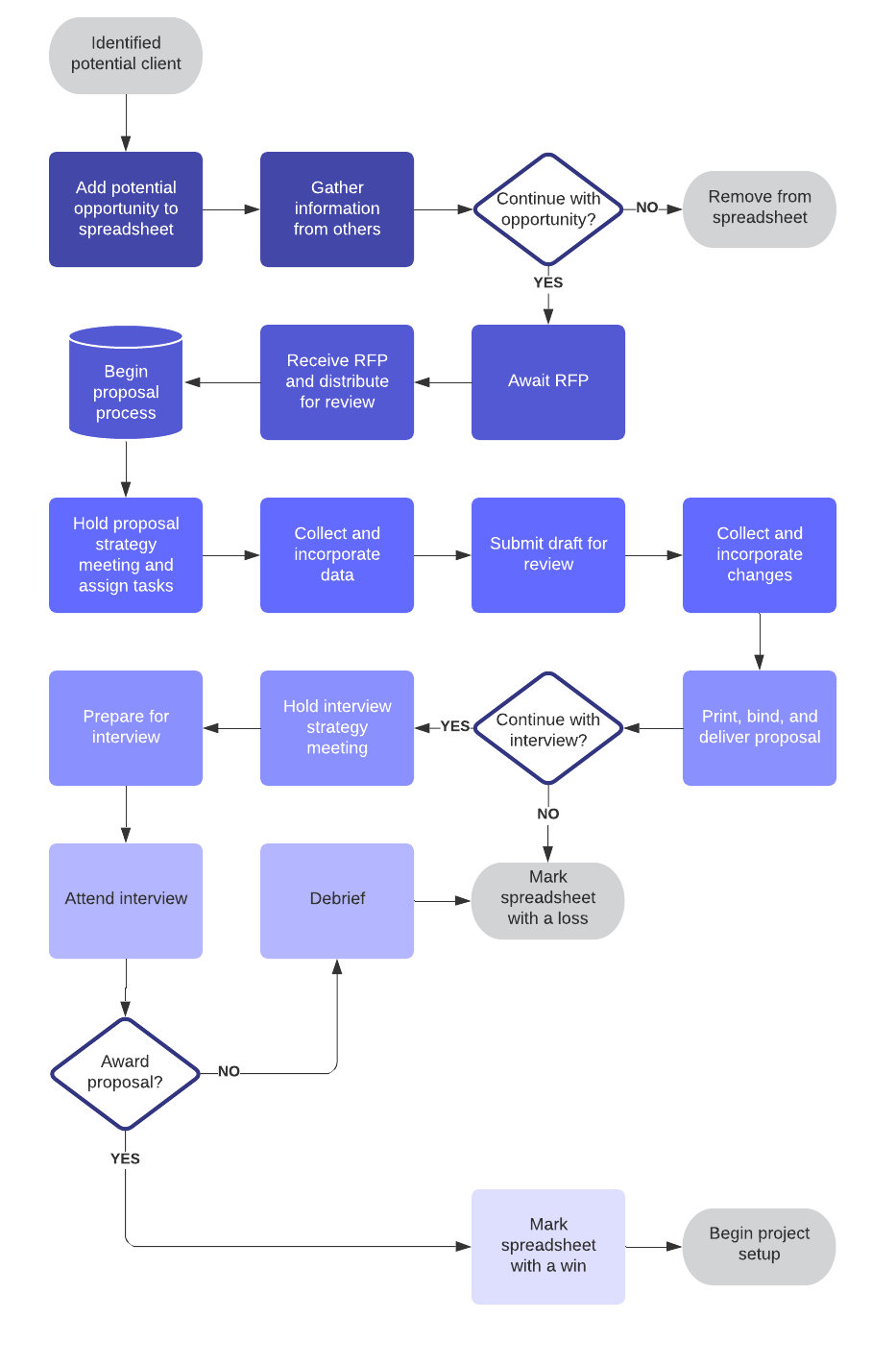
The importance of collaboration to avoid single-mindedness
Lucid Content
Reading time: about 7 min
Leaders and experts earn those designations for a reason. Ideally, the leaders in your organizations bring people together, identify roadblocks in processes, and act confidently. These authority figures are necessary to move the organization forward. Without them, decisions are made by committee, and bureaucracy derails progress.
Those leaders often rely on experts, external subject matter experts, or internal employees with deep know-how and career experience to inform timely, strategic decision-making.
However, even the most effective leaders know that a single-minded approach to any project or process results in single-minded work. They often rely on experts, external subject matter experts, or internal employees with deep know-how and career experience to inform timely, strategic decision-making. Collaboration empowers organizations to think more expansively, move beyond limitations and bureaucracy, and build productive processes to achieve cross-organizational alignment.
Let's unpack the importance of process improvement: how a single-minded approach can stand in the way of a truly collaborative, efficient workplace and how effective collaboration can help you unlock the sum of your organization's creative genius.
Why every company should be striving for process improvement
Modern business moves at a blistering pace. To keep up, companies continually strive to find shortcuts, pivot more quickly, and test and learn processes that result in the best outcomes. This reality has led many innovative companies to streamline operations everywhere they can—and extend process improvement throughout the entire organization to create new ways of working together.
Process improvement plans and strategies can be implemented immediately to build more efficient and effective workflows at any organization, within existing budgets and resources, and without massive change management or innovation. Companies that make continuous process improvement a part of the culture see a multitude of benefits, from the elimination of silos to improved agility to reduced costs in order to maintain a competitive advantage.
Why collaboration is key to process improvement
Consider this scenario: Your company is launching a new project, and your project manager has built out a seemingly comprehensive go-to-market plan and integrated marketing campaign. As the wheels start turning, the project manager realizes that the creative team wasn't aware of the upcoming launch and lacks the resources to deliver the assets needed by the launch date. The communications plan is ready to go, but the legal team wasn't consulted, and now the draft of the press release needs to be rewritten.
Simply put, the process didn't consider all the players or potential requirements—a lack of collaboration that led to a one-track-mind process, a delayed product launch, and, ultimately, lost time and revenue.
Let's explore the reasons how collaboration can help you avoid single-mindedness.
Surfacing hidden or previously underutilized talent
Inspiration often comes from unexpected places. And in today's economy, ideas win over hierarchies. By fostering a culture of collaboration, you can surface talent that exists in individual contributor roles and use it to improve your processes and drive business results.
Eliminating silos
The ability to eliminate silos is a seemingly obvious, but critical, benefit of collaboration. When your business processes only consider high-level stakeholders or only your boots-on-the-ground crew of executors of creatives, you're missing key inputs essential to the success of any campaign or project.
Building products—and processes—that work for everyone
If you're only considering a narrow set of viewpoints when you're creating a new product, you're creating a vacuum and eliminating the perspective of a giant subset of potential users. The same is true for optimizing processes—it's important to consider everyone involved in the process to build effective processes for everyone.
Fostering a sense of belonging and ownership
By building a process that works for everyone, you've empowered individuals across your organization to feel like a larger part of the whole and take pride in their role.
Shining a light on blind spots
Without collaboration, you simply can't know what you don't know. Collaborative processes allow you to uncover blind spots both in your strategy and in the way you work.
These blindspots are why collaboration is so critical to process improvement—and the data backs it up. While McKinsey reports that up to 80% of businesses use collaborative tools to enhance business processes, another survey revealed 39% of employees believe that people in their organization don't collaborate enough.
By bringing together multiple stakeholders to optimize your process, you can clearly and accurately document the current state of the process, identify any previously hidden roadblocks or opportunities for improvement, and optimize the way work gets done. Even better, you can tap into the collective potential of your talent to make employees feel more engaged and find innovative solutions.
Tips on how to improve collaboration for continuous process improvement
Collaboration doesn't always come easy. Every organization holds a complex dynamic of roles and responsibilities, personalities, culture, ambitions, and priorities.
With clearly defined processes in place, these unique perspectives can be effectively channeled to drive innovation. Minus collaboration, these viewpoints can result in discord and dysfunction. Here are some tips on how to improve collaboration for continuous process improvement.
Identify the right stakeholders
The quickest way to derail a project is to fail to understand (or worse, ignore) the key players who need to be involved in the process. Start by taking a holistic look at the project and think about every individual and team—both big and small—who will play a role in each step.
Conducting interviews may help identify cross-functional synergies, creating a holistic view of the process, and minimizing rework. For example, if you're creating promotional assets for a content campaign, you could ask the content director involved in the creative process from ideation to publishing. In doing so, you'll likely uncover a lot of individual team members and steps that you hadn't previously considered.
It's also essential to hold collaborative meetings to discuss any existing holes in the process: Where do things currently get off track? What is going smoothly? Who are the individual contributors, who drives strategy, and who gives the final signoff?
Considering every step and layer of the process will help you identify your stakeholders and break down silos. This step can also help you determine who is distinctly NOT stakeholder and can be eliminated from the process to speed up work or approvals.
Gather exact data where possible, not just anecdotes
As you identify stakeholders, you may also hear anecdotes or opinions about what process works best. This qualitative input is important, but optimization should be driven just as much by quantitative data.
Take a look at data from recently completed projects: How many days did it take to see the project from ideation to completion, and what were the results?
Digging into this data will provide some insight into the processes that drive optimal results. If this data isn't readily available, you can start testing and tracking now. As you refine processes, make a note of productivity, timelines, and results that focus on ROI.
Agree on your primary goals and metrics
Wrangling people, processes, and tools is a tough enough task for any project manager—it's even more challenging when you lack alignment on the end goal or desired outcome. Strategic alignment is a critical part of any project and even more important when changing or optimizing processes.
Before you map out the process, start by getting everyone on the same page regarding project goals and metrics. Start by asking a few key questions: What outcome are we trying to achieve, and how will we measure success?
Once you and your team gain alignment on these answers, it's possible to clarify even the most complex processes. As a result, teams can walk in lockstep as the project moves forward.
Map out your process visually to keep everyone on the same page
Process mapping is an effective way to visually describe the flow of work. A process map or flowchart is a great way to visually communicate as-is and future-state processes, collaborate with key stakeholders in real time and gather feedback.

By mapping out this process visually, you can highlight important details of a process, highlight wasteful or duplicative steps in the process, and quickly get everyone on the same page while eliminating the need for lengthy and confusing written directions.
Better performance, greater efficiency, and improved outcomes start by documenting, tracking, and creating clear processes. Using Lucidchart, organizations can visually map out existing and future-state processes, identify holes in existing processes at a glance, quickly gain buy-in, and strategic alignment across the organization.
Embracing collaboration as you build out and optimize these processes guards you against a single- or narrow-minded approach to how work gets done—even better, it creates a culture of continuous process improvement that drives real results.

Find out how to document and analyze your as-is processes to start optimizing your organization.
Learn moreAbout Lucidchart
Lucidchart, a cloud-based intelligent diagramming application, is a core component of Lucid Software's Visual Collaboration Suite. This intuitive, cloud-based solution empowers teams to collaborate in real-time to build flowcharts, mockups, UML diagrams, customer journey maps, and more. Lucidchart propels teams forward to build the future faster. Lucid is proud to serve top businesses around the world, including customers such as Google, GE, and NBC Universal, and 99% of the Fortune 500. Lucid partners with industry leaders, including Google, Atlassian, and Microsoft. Since its founding, Lucid has received numerous awards for its products, business, and workplace culture. For more information, visit lucidchart.com.
